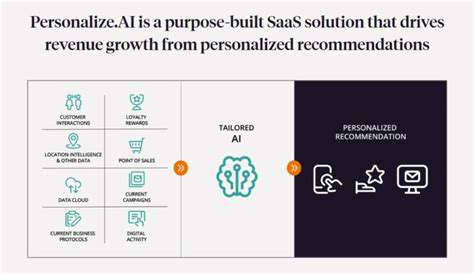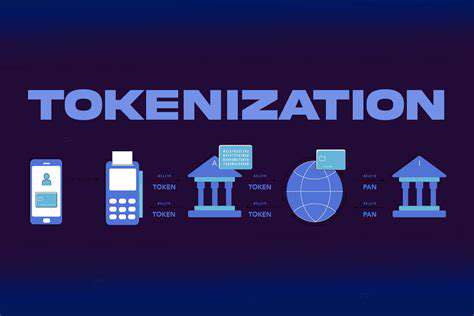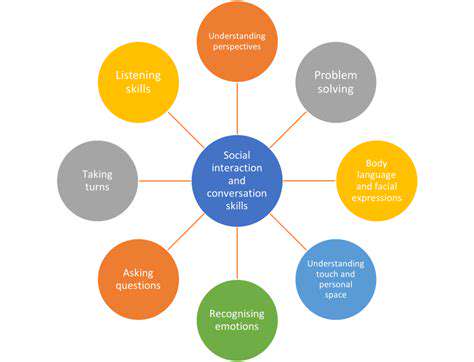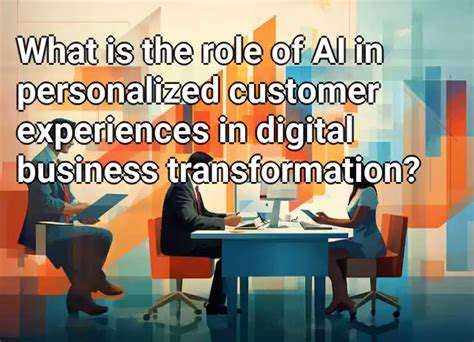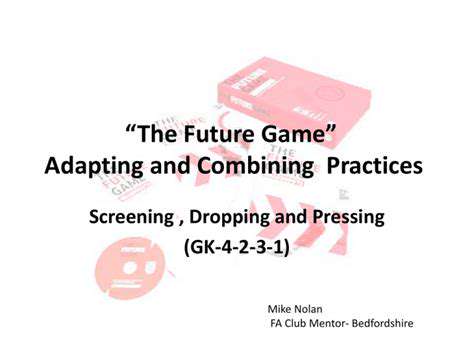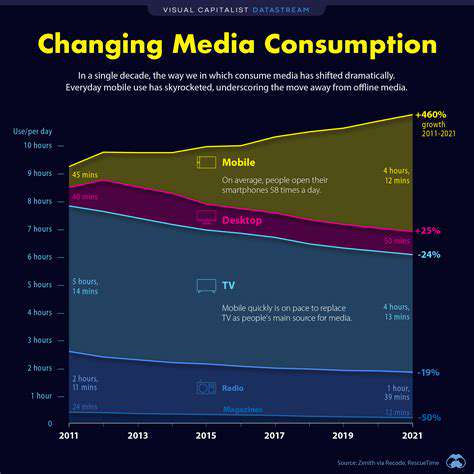VR, AR, and Beyond: The Spectrum of Immersive Entertainment

Immersive Experiences
Virtual Reality (VR) technology offers a unique opportunity to transport users to entirely new and immersive environments. These environments can be anything from fantastical landscapes to realistic simulations of real-world scenarios. This ability to create believable and interactive experiences is a key driver of VR's potential in various fields. Users can explore these virtual worlds with a sense of presence, feeling like they are truly within the environment. This sense of presence is crucial in creating engaging and memorable VR experiences, leading to a deeper connection with the virtual space.
The potential of VR extends far beyond entertainment. In education, VR can provide students with interactive and engaging learning experiences, allowing them to explore complex concepts and processes in a safe and controlled environment. In medicine, VR can be used for training surgical procedures and treating phobias. VR's versatility makes it a powerful tool with applications across numerous sectors. The possibilities are truly endless, and as the technology continues to evolve, we can expect even more innovative uses to emerge.
Imagine exploring the depths of the ocean without getting wet, or soaring through the skies without a plane. VR allows users to experience these and many other extraordinary scenarios. This ability to transcend physical limitations is a significant advantage of VR, opening up a world of possibilities for exploration and discovery.
Beyond Entertainment
While VR's entertainment applications are certainly exciting, its potential extends far beyond the realm of gaming and immersive storytelling. VR's impact on fields like education and healthcare is already being felt, and its role in future developments is sure to be profound. Educational institutions are beginning to leverage VR to create dynamic and interactive learning experiences, allowing students to explore historical events, scientific concepts, and even foreign cultures in a way that traditional methods cannot match.
Surgical training is another area where VR is making a significant impact. Virtual environments provide a safe and controlled environment for surgeons to practice complex procedures without risking patient safety. This not only enhances surgical skills but also allows for increased efficiency and reduced costs. This application demonstrates the transformative potential of VR in the medical field.
Furthermore, VR is being explored as a tool for treating phobias and anxiety disorders. By exposing patients to virtual situations that trigger their fears in a controlled environment, VR therapy aims to desensitize them to those fears, ultimately leading to a reduction in anxiety and improved mental wellbeing. This therapeutic application shows the potential of VR to address mental health issues in a new and innovative way.
The practical applications of VR extend to various industries, offering unique training and collaboration opportunities. This capability is opening doors to more sophisticated simulations, allowing for the refinement of existing skill sets and the development of new ones.
Beyond VR and AR: The Future of Immersive Technologies

Beyond the Immersive Interface: Embracing the Multisensory Experience
The future of immersive technologies extends far beyond the realm of Virtual Reality (VR) and Augmented Reality (AR). While these technologies offer exciting possibilities for entertainment and training, the true potential lies in a more holistic and integrated approach that embraces a wider range of human senses. This means going beyond just visual and spatial immersion to incorporate auditory, haptic, and even olfactory cues to create a truly enveloping and believable experience. The potential for breakthroughs in medical training, design, and even emotional connection is vast.
Imagine a surgical training simulation that not only visually replicates the operating room but also provides tactile feedback, mimicking the feel of instruments and tissues. This level of sensory immersion would dramatically improve the efficacy of training, allowing surgeons to develop a more nuanced understanding of complex procedures and ultimately leading to safer and more precise surgical interventions.
Personalized Experiences: Tailoring Immersive Technologies to Individual Needs
The future of immersive technologies will be profoundly shaped by the increasing ability to personalize experiences. By collecting and analyzing vast amounts of data about individual users, we can create highly tailored and adaptive environments. This means tailoring the level of immersion, the visual fidelity, and even the emotional responses within the experience to match the user's specific needs and preferences. This personalization will be crucial for creating truly engaging and impactful experiences across various applications.
This personalization extends beyond simple preferences to address individual learning styles and cognitive abilities. Imagine educational applications that dynamically adjust the level of complexity and pacing based on the student's progress and understanding, creating a truly individualized and effective learning environment.
The Convergence of Physical and Digital Worlds: Bridging the Gap
A key aspect of the future of immersive technologies is the seamless integration of the physical and digital worlds. This convergence will allow users to interact with virtual objects and environments as if they were tangible, opening up new possibilities for design, collaboration, and problem-solving. Imagine architects using immersive tools to design buildings and visualize them in their physical context, allowing for greater accuracy and creativity.
The blurring of lines between physical and digital will redefine how we interact with our surroundings, impacting our daily lives in profound ways. This integration will revolutionize fields like industrial design, allowing for virtual prototyping and testing, reducing costs and improving efficiency in product development.
Ethical Considerations and Societal Impacts: Navigating the Uncharted Territory
As immersive technologies evolve, it's crucial to address the ethical considerations and potential societal impacts. Issues like data privacy, accessibility, and the potential for misuse must be carefully examined and proactively addressed. Developing responsible guidelines and regulations will be essential to ensure that these powerful technologies are used for the benefit of humanity.
The responsible development and deployment of immersive technologies will require careful consideration of their potential impact on social interactions, mental health, and the overall well-being of individuals and communities. Open dialogue and collaboration between technologists, policymakers, and the public will be vital in shaping a future where these technologies are used ethically and responsibly.
Read more about VR, AR, and Beyond: The Spectrum of Immersive Entertainment
Hot Recommendations
- Immersive Culinary Arts: Exploring Digital Flavors
- The Business of Fan Funded Projects in Entertainment
- Real Time AI Powered Dialogue Generation in Games
- Legal Challenges in User Generated Content Disclaimers
- Fan Fiction to Screenplays: User Driven Adaptation
- The Evolution of User Driven Media into Global Entertainment
- The Ethics of AI in Copyright Protection
- Building Immersive Narratives for Corporate Training
- The Impact of AI on Music Discovery Platforms
- AI for Audience Analytics and Personalized Content
